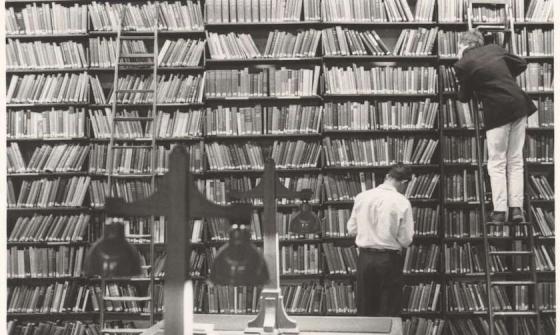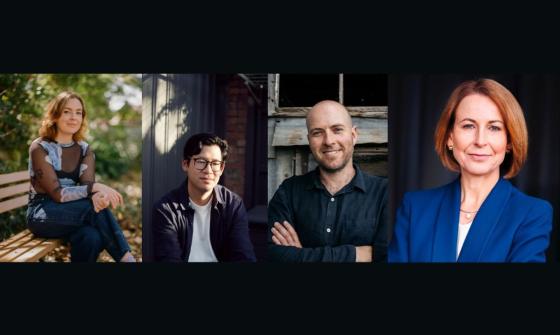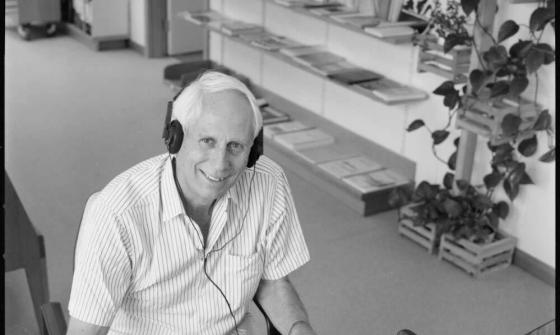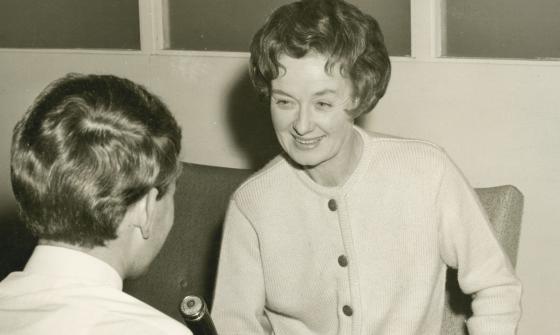Australian authors in the oral history collection
Our collection holds more than just millions of books by Australian authors, it preserves their voices. In recorded oral history interviews, these writers reflect on their lives, their craft, and the experiences that shaped their stories. Their words offer a rare and deeply personal glimpse into the minds behind some of Australia’s most treasured literature.
Hear from Colin Thiele, Kylie Tennant, Gabrielle Wang, Doris Pilkington, Norman Lindsay and Christina Stead as they share their thoughts, memories and creative journeys.
Colin Thiele
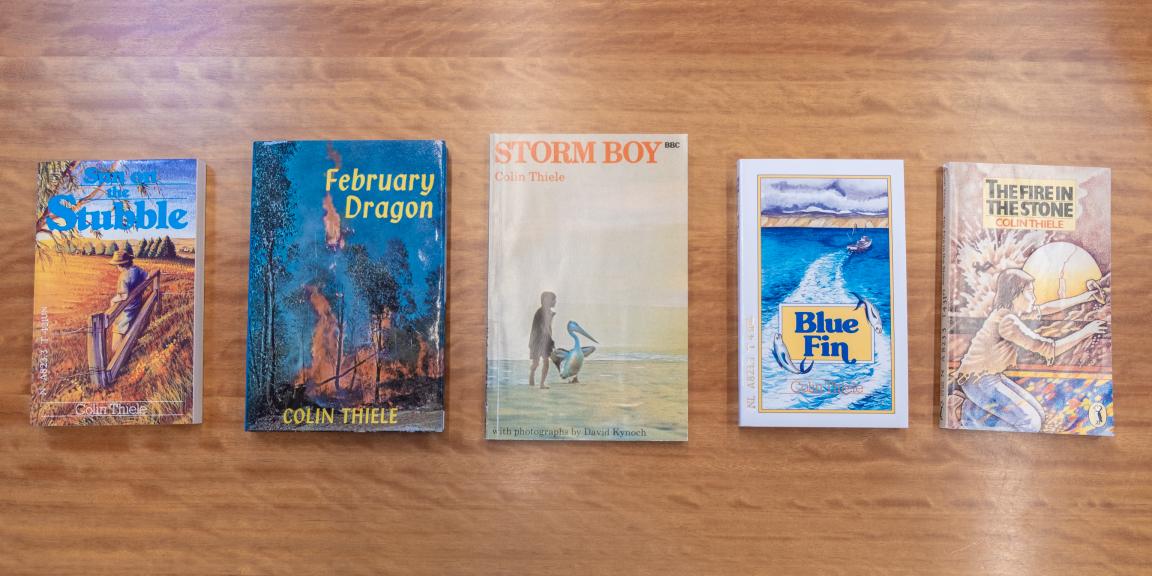
The Sun on the Stubble, February Dragon, Storm Boy, Blue Fin and The Fire in the Stone by Colin Thiele
The Sun on the Stubble, February Dragon, Storm Boy, Blue Fin and The Fire in the Stone by Colin Thiele
Author of more than 100 books across many subjects, including poetry, history, biography and education, Colin Thiele is most renowned for his children’s literature, such as Storm Boy, The Sun on the Stubble and February Dragon.
There are several recordings of Thiele in the collection, covering much of his life including his upbringing in a German-Australian family, university, time in the Royal Australian Air Force and work as a teacher and administrator. Thiele discusses how this all impacted his work as an author and describes his writing style and process more broadly, including the extra responsibility of writing for children.
Writing for children has certainly, it has a number of facets which I think writing for adults hasn't. And the most important one is in fact that you can't avoid being aware that you're an educator. Every word you write, you're being an educator. And every attitude and belief and approach and point of view, yeah, you're influencing kids.
In an interview with Hazel de Berg, Thiele also discusses how his love of unique Australian environments and his concern for their preservation influenced his work.
I wrote Storm Boy in 1961 chiefly I think because of my love of the Coorong region in South Australia ... It also reflected my interest in the general ecology in the region and conservation and preservation of wildlife, which is of course one of the central themes of the story.
... The world of the wilderness is of course a diminishing area in virtually all parts of the planet and Australia is no exception. And because I feared too that the Coorong would possibly change fairly dramatically under the pressure of population that it was necessary to try to preserve its essential spirit, as it was in its natural state. And one of the best ways of doing that was through fiction, through a story based in the area, although I have also written factual and environmental books about the region.
In one recording Thiele discusses some of the letters he gets from his young readers. Many of these, along with general correspondence, photographs, unpublished works and other materials, can be found among his papers.
Kylie Tennant
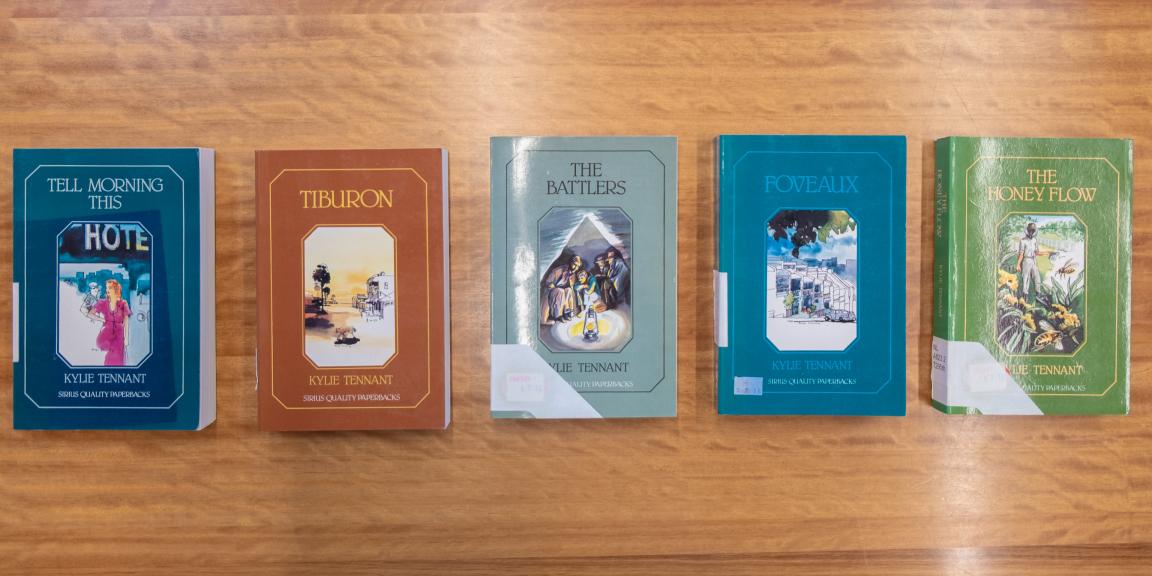
Tell Morning This, Tiburon, The Battlers, Foveaux and The Honey Flow by Kylie Tennant
Tell Morning This, Tiburon, The Battlers, Foveaux and The Honey Flow by Kylie Tennant
Like Thiele, Kylie Tennant saw her work as an author, in addition to being a playwright, journalist, historian and reviewer, as a way to educate people.
I’ve always regarded myself as a political journalist rather than a novelist. If you entertain people they may be in a better mood to listen to what you’re saying.
Specifically, many of her works told stories of hardship, poverty and disadvantage in Australia, such as The Battlers, Tiburon and Foveaux. In her oral history interview, Tennant discusses how she came to write these stories, despite her having no interest in becoming an author.
I wrote a book called Tiburon, which won the Prior Memorial Prize at The Bulletin. I wrote this book because at the time I was interested in agrarian reform ... Tiburon is a study, as far as I could make it honest, of conditions in a country town. Those were the conditions at the time, I was very interested to alter them.
... I suppose that my enjoyment is in getting the material for books. I hate writing them, I put it off as long as possible. I start in great desperation and do 9 first chapters. Once I’m in it, I continue on to the end, feeling very frail because there is nothing that makes your shoulders ache like pounding a typewriter eight hours a day, and usually I’m so close to the deadline that I have to do this.
But I never regarded myself as a novelist, I just somehow happened into it ... I started out by doing it just for the money ... and now I think I really like writing.
More about the personal and professional life of Tennant can be found in her papers, which include correspondence to friends, family and many notable literary figures, personal documents, notes and notebooks, literary manuscripts, press cuttings and photographs.
Gabrielle Wang
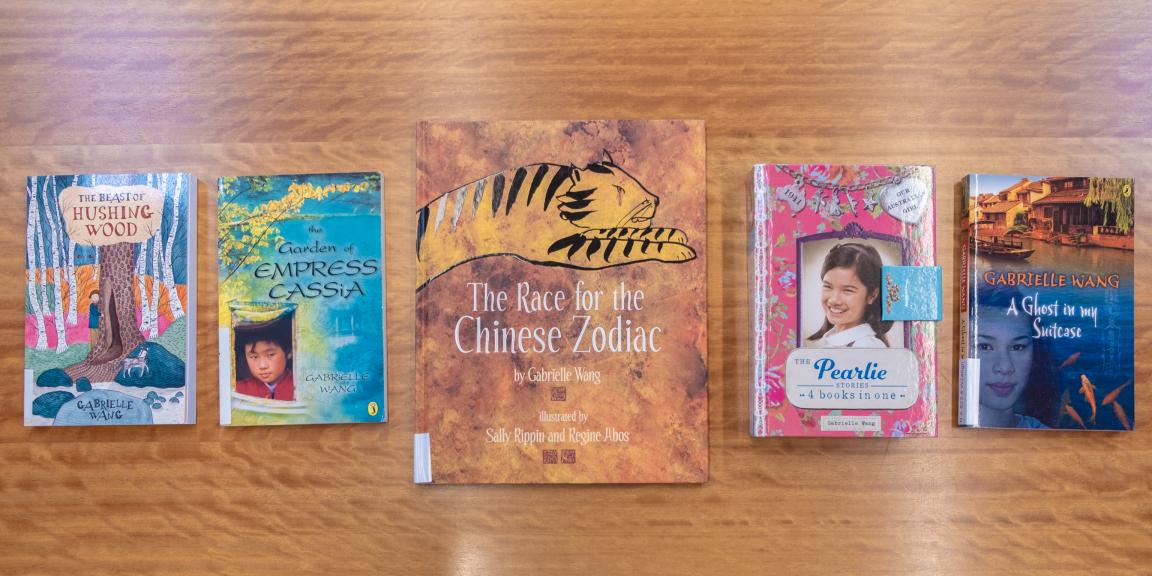
Author and illustrator Gabrielle Wang is best known for her highly awarded books for children and young adults such as The Race for the Chinese Zodiac, Zadie Ma and the Dog Who Chased the Moon, and A Ghost in my Suitcase, as well as several books in the Our Australian Girl series.
In Wang’s interview with Anna Zhu, which was part of the Australians with Chinese heritage oral history project, she talks about her family history in great detail, starting with her great-grandfather's move from China to Australia during the gold rush.
She goes on to discuss her own childhood, including how she struggled to connect with her Chinese heritage, through to adulthood when she began to embrace her culture by studying Chinese language, philosophy and art. This journey, her experiences along the way, and several members of her family went on to inspire many of her works.
So when I was writing The Garden of Empress Cassia, which was my first book ... I gave Mimi problems that I faced. You know, hating being Chinese, self-loathing about being Chinese, ashamed of the parents, all that sort of thing.
But of course in a novel - in a children's novel - you can make it have a happy ending. So of course Mimi discovers being, that having more than one culture is a wonderful thing. And so, you know, hopefully children who read that can also appreciate their own diverse nature. Yeah, I think all those things that I put in my books are all definitely personal.
When discussing her writing process, Wang shares how several rejections from agents and publishers early in her career continue to impact her.
I edit my books probably 40, average of 40 times or more. Go through the whole manuscript again and again and again. So every single time, when the structure letter comes back, I just pull my hair out. And I go, 'Can't do this. I cannot do this. Going to give up. Nuh'. And then Steve comes in, and he says, 'Remember last time? Exactly the same spot. You do this every single time'. And I go, 'Oh yeah, I guess you're right'. And then I pull myself together.
You have to be, you have to be very resilient and very self-disciplined to be a writer, and to have a very thick skin. And even though it affects you when you are rejected, and I'm still rejected, even though I'm Australian Children's Laureate ... that’s all part of it.
Doris Pilkington
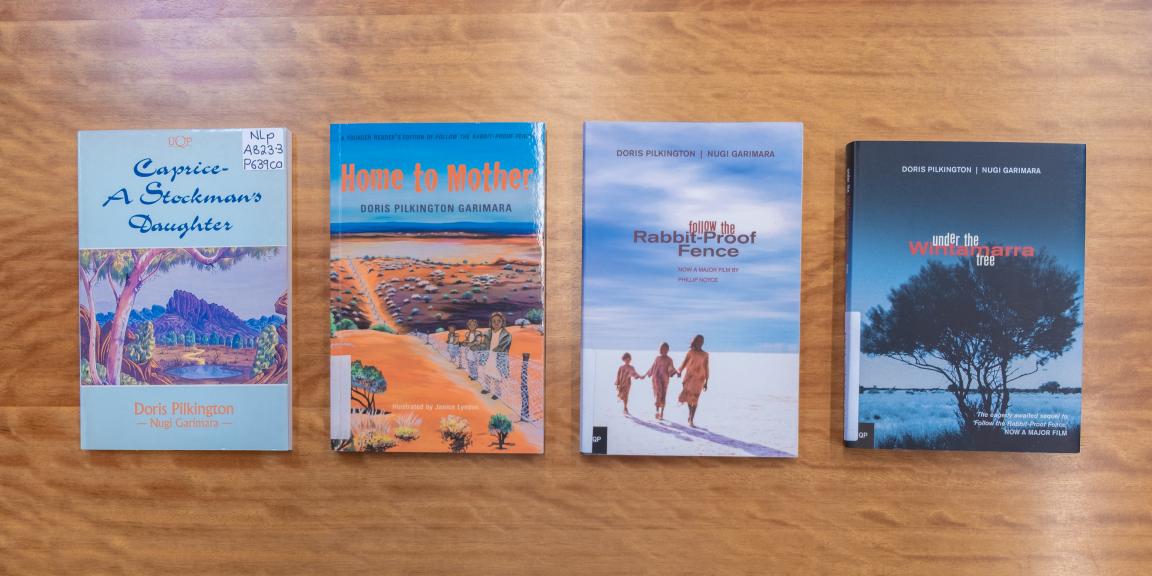
Caprice: A Stockman's Daughter, Home to Mother, Follow the Rabbit-Proof Fence and Under the Wintamarra Tree by Doris Pilkington
Caprice: A Stockman's Daughter, Home to Mother, Follow the Rabbit-Proof Fence and Under the Wintamarra Tree by Doris Pilkington
Gabrielle Wang is of course not the only author to base characters on her family. Another author known to have done so is Doris Pilkington, born Nugi Garimara. Her most well-known novel Follow the Rabbit-Proof Fence is based on the journey of her mother who, along with two other girls, walked more than 1,500 kilometers after escaping the Moore River Native Settlement in Western Australia.
In a 2001 interview conducted as part of the Bringing Them Home Oral History project, Pilkington discusses her mother’s journey, her own experience at the Moore River Native Settlement from the ages of 3 to 18, and her first published novel Caprice: A Stockman's Daughter.
In a follow-up interview in 2011 for the Bringing Them Home after the Apology Oral History Project, Pilkington talks about seeing her mother’s story come to life in the Follow the Rabbit-Proof Fence film.
I just wanted to write the book and write my mum’s story. And having it, seeing it go from book to film, that was astounding. I couldn’t accept that for quite a while, to know that this is happening to me. I never ever dreamed that this would go that far.
... Seeing Ningali in the, when the children were, you know, taken away from their mothers, that affected me so much, I broke down. And ever since that when it was produced and shown on widescreens all over the world, mothers all over the world had the same, it had the same impact on mothers all over the world. That scene, the adoption scene, lived in their memories and will be there forever most of them said.
She also discussed her involvement in the film, working with director Phillip Noyce.
In pre-production, Phillip Noyce always included me in any changes that needed to be made. He was very strict on Indigenous protocol which I encouraged him to do at the beginning.
... So what Phillip Noyce did in his usual manner was to bring two types that they’d run, two takings and brought them to me and said ‘Well, which one?’ so I chose the one that’s on film now ... That’s how we worked all the way through the film, in pre-production process. So, once he had all the instructions from me, he actually went on to film it and still included me in the production side of it. Which was good, I thoroughly appreciated that.
Norman Lindsay
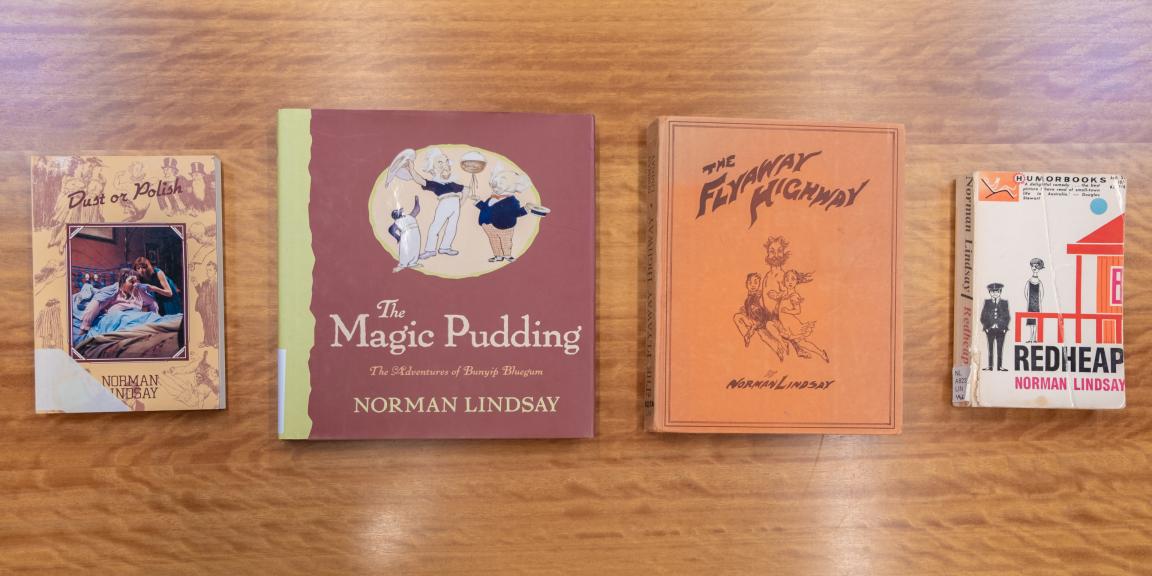
Dust or Polish, The Magic Pudding, The Flyaway Highway and Redheap by Norman Lindsay
Dust or Polish, The Magic Pudding, The Flyaway Highway and Redheap by Norman Lindsay
While best known for the children’s classic The Magic Pudding and work as an artist, Norman Lindsay was also the author behind many novels, some of which caused great controversy at the time of publication. In fact, his book Redheap was the first Australian novel to be banned in the country, with the ban lasting nearly 30 years.
Though his interview with Keith Adam in 1965 mainly focuses on his art and the broader Australian art world, he explains how it’s his paintings that often inspire his stories.
Well I’ve always kept by me as I work a pad. If I was sitting here painting a pad would be there. I let my ideas function and if words come just write them down you see ... By the time I’ve finished a series of paintings I've got the basis of a novel.
Following this, he reflects on his career as both an artist and writer, and how censorship of his work has shaped how he is viewed in Australia compared to America.
I often think ‘Thank the wowsers’ for having censored all my novels, because it would have confused the public. ‘What is he? Is he a novelist or is he an artist?’ Well I grew up as an artist you see in this country. In America they took me for a writer. When I was over there, I went over there in the 30s, I was a writer who did a little painting. And they still regard me as a writer ... the stuff I’ve written sold very well over there.
Christina Stead
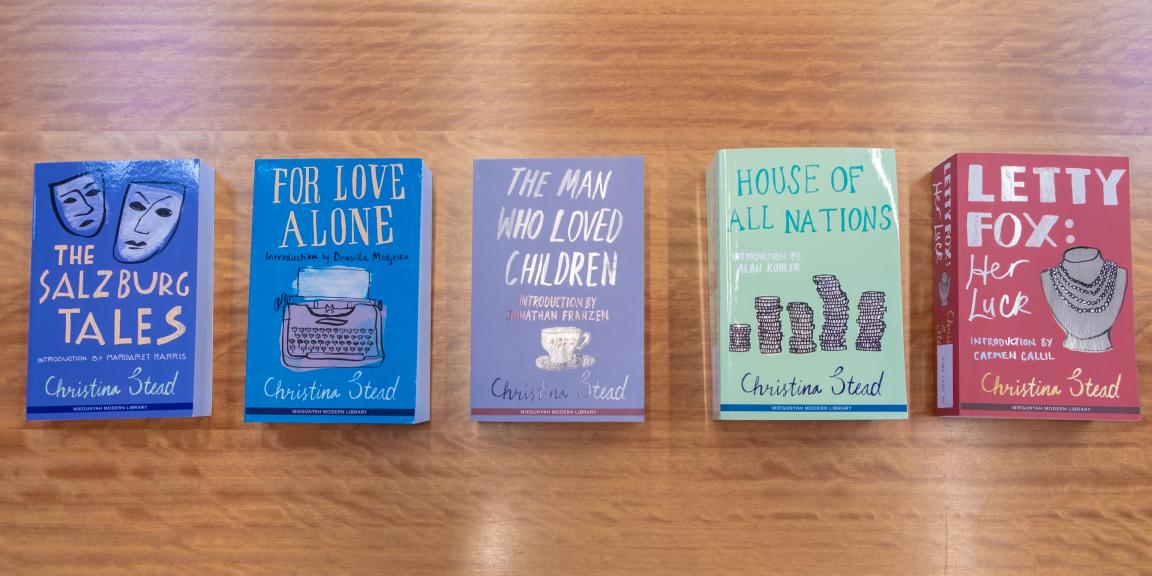
The Salzburg Tales, For Love Alone, The Man who Loved Children, House off All Nations and Letty Fox: Her Luck by Christina Stead
The Salzburg Tales, For Love Alone, The Man who Loved Children, House off All Nations and Letty Fox: Her Luck by Christina Stead
While Christina Stead didn’t write as many books as some of the other authors in this blog, the wit and complex characters of her novels were highly acclaimed. Her best-known work, The Man Who Loved Children, was included in Time magazine’s 100 Best English-language Novels from 1923 to 2005, among the likes of Harper Lee’s To Kill a Mockingbird, George Orwell’s 1984 and Margaret Mitchell’s Gone with the Wind. Other notable novels by Stead include For Love Alone, Seven Poor Men of Sydney and The Salzburg Tales.
In a 1969 interview with Hazel de Berg, Stead reflects on her journey to become an author, including her brief time as a teacher, and time living in different countries around the world. Throughout it all, she emphasises how she has always been a writer, simply because she enjoys it.
People ask me when I became a writer, but I’m one of those people who was always a writer, or always a musician, or always a painter, one of those things, you know. I never thought of it professionally at all, I think for that very reason. When there was a high school paper or a teacher's college paper, I would edit it and if there were spaces to fill in, I’d fill in the spaces. Generous spirit, generous to myself of course. But writing to me was just, I didn’t even think about it. And people always said to me from the time I was about 8 or 9 ‘You’ll be a writer’. And I believed them, I thought I would, but I never formed any plans. I had no idea what I would do.
... I adhere to this story that I always was a writer in a peculiar sense. I would get up very early in the morning and write a bit, write a thing, something that pleased me. It was never with any idea of publication. It was because I wanted to. And I must say now that I don’t write with an idea to publication. I don’t care about publication.
She goes on to describe her process for writing and how she gets started with a story.
I start with a character, somebody who strikes me very forcibly and I think to myself ‘This is it, this is the one’. Then I allow life to grow up around that person. I don’t question them, I see how it is with them in life, if I may say so, as you would if you were studying a tree and its background and its ecology. Thats kind of a job. And then the drama that arises, arises from them, and their relations with their friends, their background. It isn’t, by the time I'm finished, it isn’t just one person, naturally, it's a whole sector, group of people.
Further insight into Christina Stead, her writing and her life can be found in the Stead Collection.
Hear more stories
These are just a few of the interviews with authors we hold in the oral history collection. Browse more in the catalogue.
